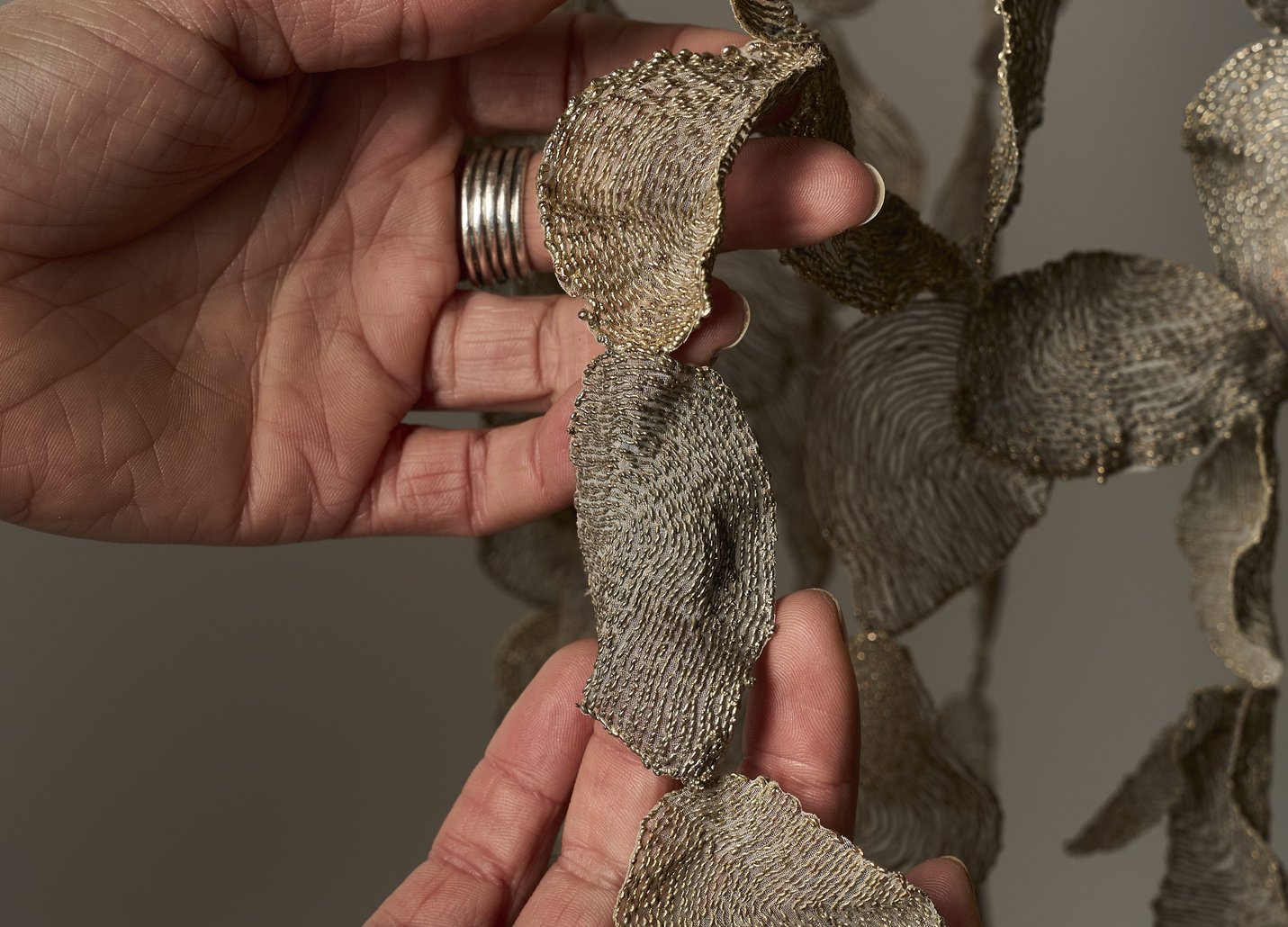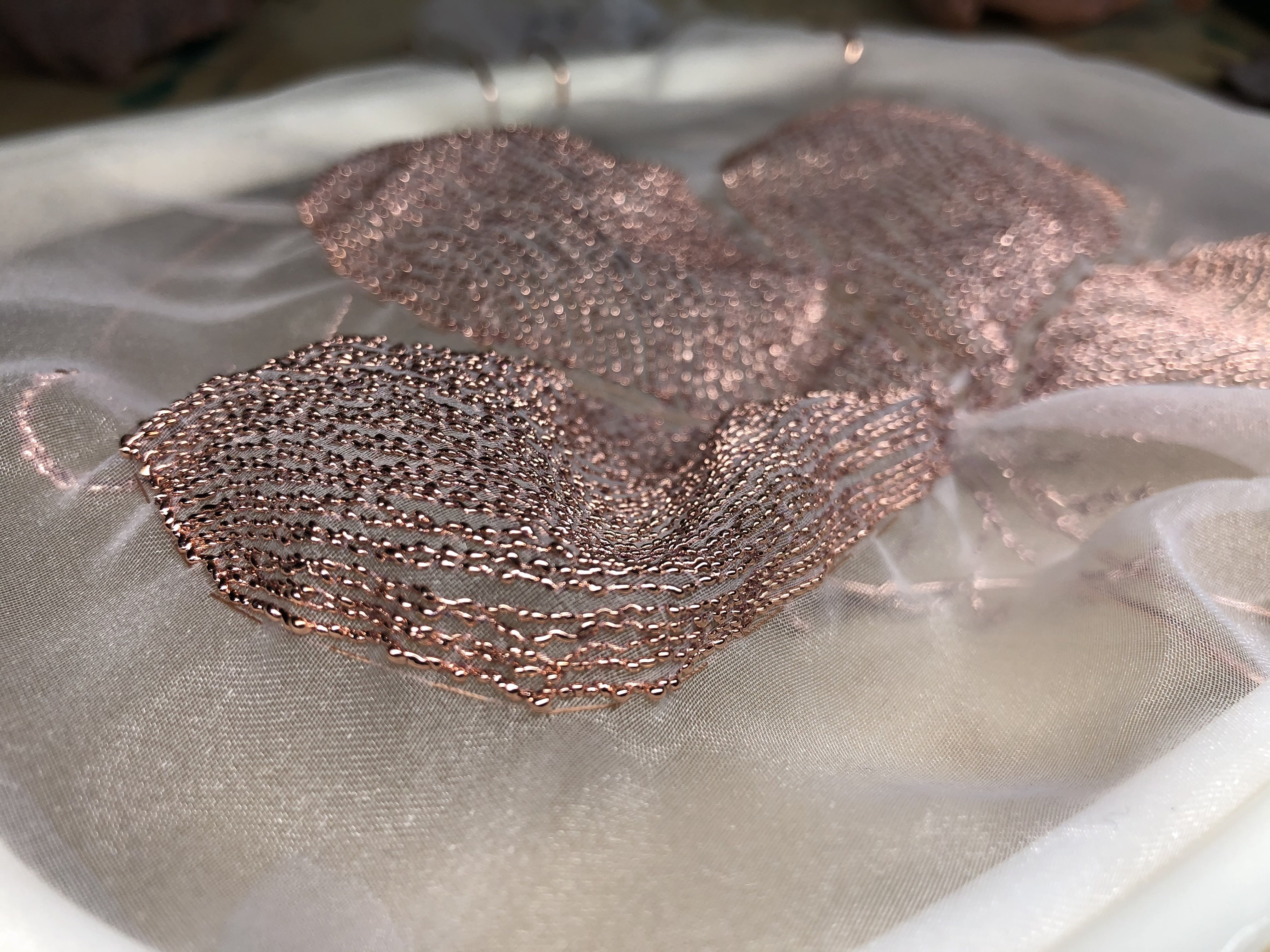
Artist Michaela Pegum speaks to Craft's Georgina Loughnan about her affinity for copper, material transformations and the beauty in trusting the process of electroforming.
Working in highly explorative ways to develop nuanced material languages, Michaela Pegum's work spans sculpture, wearable art and performance. Informed by a background in dance, a deep curiosity, and a poetic sensibility, her practice navigates the fluid, liminal spaces of felt experience by exploring the immaterial qualities that shape relationships between the sensing body and its environment.
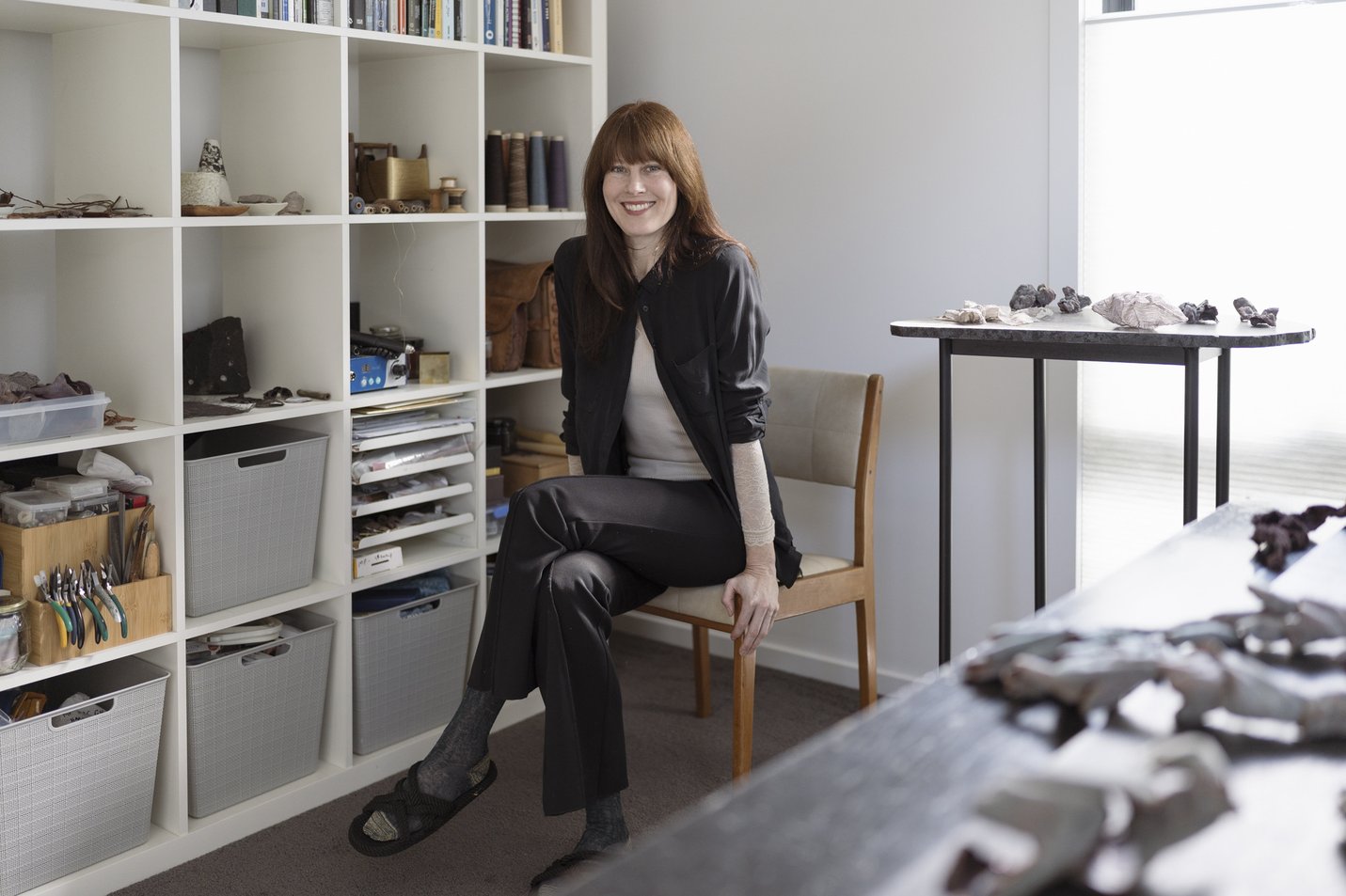
Her new work Transfiguration II (2025), features in In the Making - Craft’s upcoming exhibition that delves into the intimate interplay between maker, material, and unpredictable processes, running August 9 — September 20, 2025 at Craft Victoria.
CV: How do heritage, memory, and material histories inform your practice?
MP: I have been compelled to create hybrid substances for some time now, bringing together materials that occupy places in what we might conceive of as different categories, and transforming them into one another alchemically. Copper, as an elemental substance from deep within the earth, evolves far from human hands. In contrast, textiles are humanly synthesised and manufactured. One earthy and dense, the other delicate, fibrous, and skin-like. This stems from my desire to stretch apart moments of transition and transformation, whether within states of being, relationships between substances, or the integration of time and material, atmosphere and the body.
I have long been drawn to copper, even before discovering I could work with it in the way I do now, due to its warmth, egalitarian character, and mercurial behaviour, especially in relation to colour. Heating copper to produce varying levels of oxidisation on its surface reveals an extensive spectrum of surprising, vibrant hues through blue, violet, magenta, red, yellow and turquoise. It also changes simply in the presence of air, oxidising to become dark toward black or the green of verdigris.
"I find these patinas, often considered as ‘tarnish’, lovely - as they express time in the material, and its relationship with the atmospheric elements it comes into contact with, a sensitive and expressive metal in this regard."
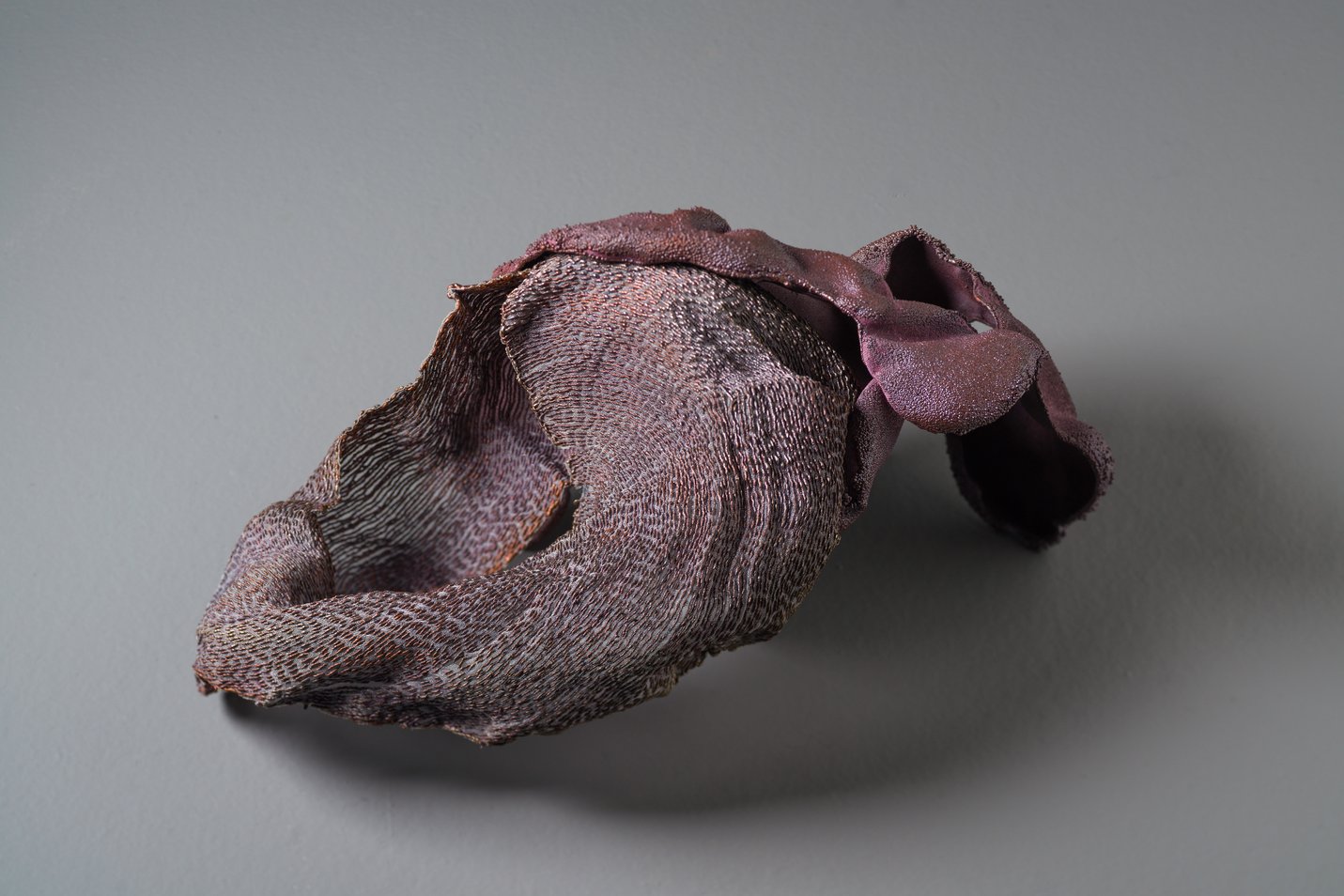
What role does repetition play in the making of your practice?
Working with this particular set of materials and processes began during my undergraduate studies, when I started researching the possibilities of electroforming textiles. It was such a mysterious and variable process that I felt compelled to stay with it for years in order to develop an understanding and eventually find a kind of fluency with it.
Fluency within process is important to me as it allows for an intuitive flow and intimacy with my materials, but this wasn’t easy to achieve with electroforming! Nonetheless, I found it so interesting I stuck with it. The repetition involved with approaching the technique again and again, making slight variations in my process and materials has allowed me to come to know this relationship of substances and forces more deeply.

"I can barely keep a conscious handle on all the nuances and details of the knowledge accumulated over this time, but it makes its way into an embodied, instinctive understanding, almost like knowing a person."
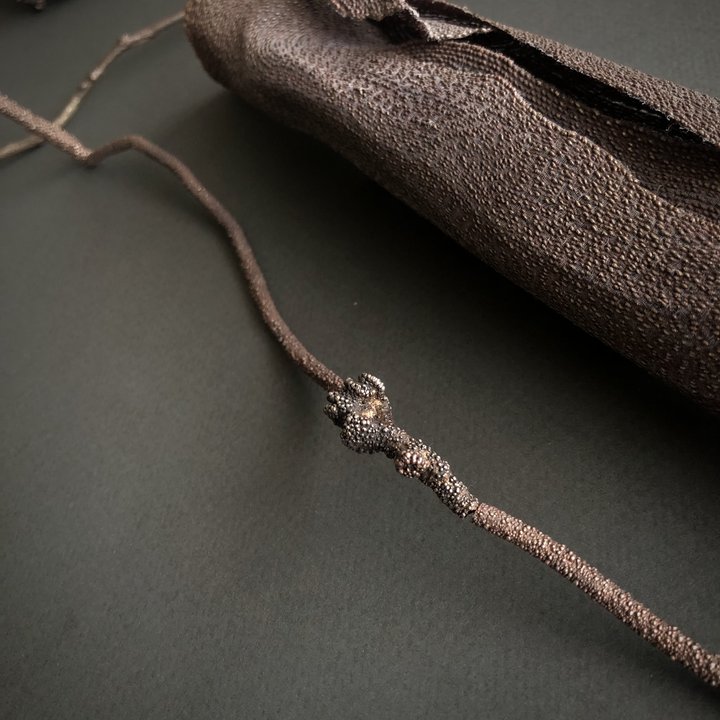
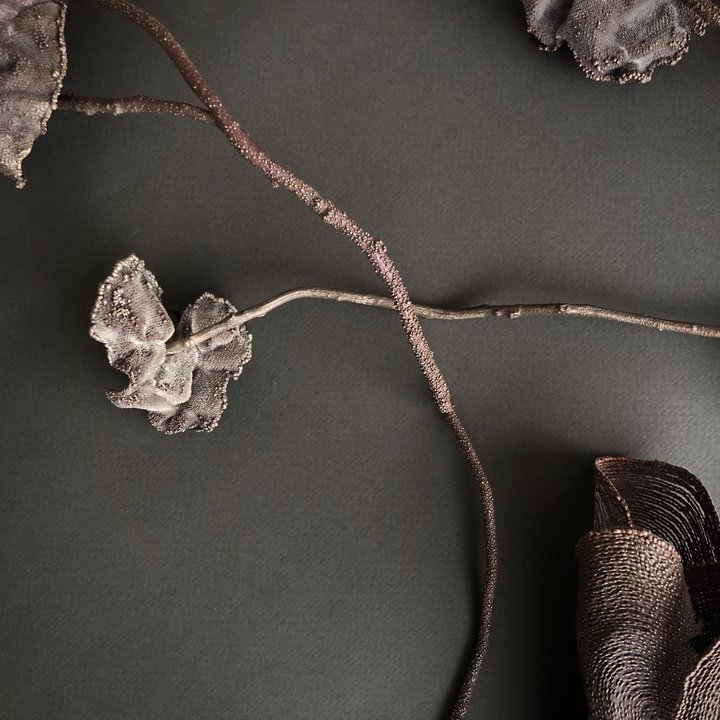
What informs your processes? Did the materiality or process come first, or do you find they inform each other?
I would say it is a quality of feeling and sense of transformation that drives my processes, and it has been a matter of experimenting with techniques and materials to find ones that allow me to precipitate these things. I can never entirely design a form from the outset as I just don’t have that level of control, the process of creation is an experience of discovery.
There is a lot of experimentation and reflection involved, as I converse with and respond to the forms that emerge, and come to understand through my instinctive choices. Which forms are interesting me and what this means - what these forms are communicating through their evocative and abstract language, and why that is important in the work. In this sense, I am tapping into a subconscious response to make these creative decisions, and the process itself, with the forms evolving and emerging from the blue watery realm of the electroforming solution, has a subconscious quality to it also.
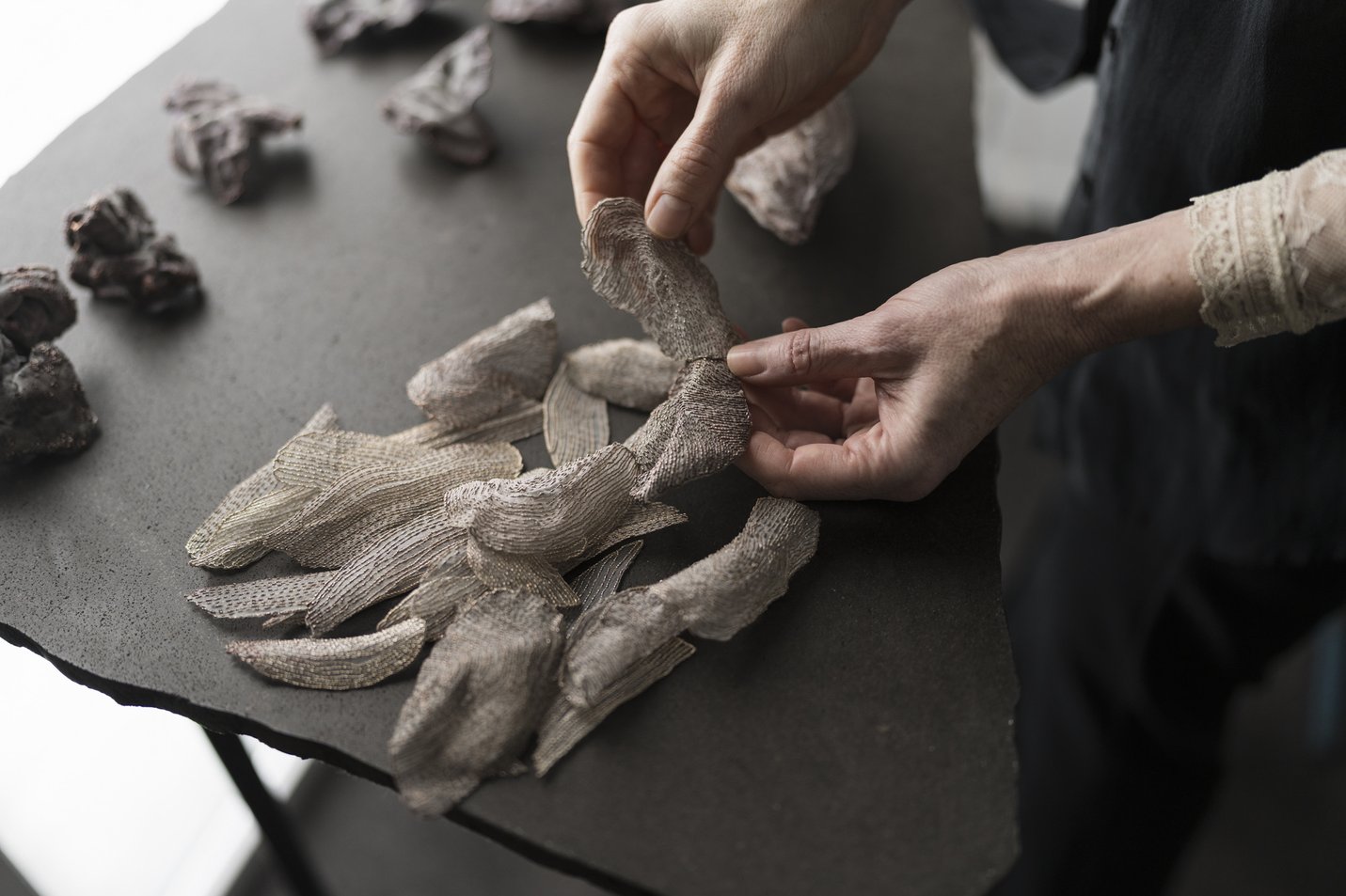
What draws you to return to a chosen material and/or process?
At this stage in my life, electroforming has a large presence in my artistic practice. I don’t conceive of it as a technique or a machine, so much as a relationship of substances and forces, with which I collaborate. For me, what we create bears the hallmarks of the force of life, and this is what draws me to it and keeps me coming back to work with it again and again. Perhaps my background in dance plays a part in this, as the primary material I worked with in this practice was energy. I see and feel energy through the process of growing metal into substances, and this sense of life, of the energy behind things, and how we relate to, and find meaning in this invisible bedrock of being, forms the wellspring of my practice. Because I am not solely holding the reins with this process, I also learn a lot from it.
"This has to do with it being a rather mysterious, mercurial and alchemical process - it teases my imagination and can’t be fully tamed by me, and in this lies a ripeness of potential."
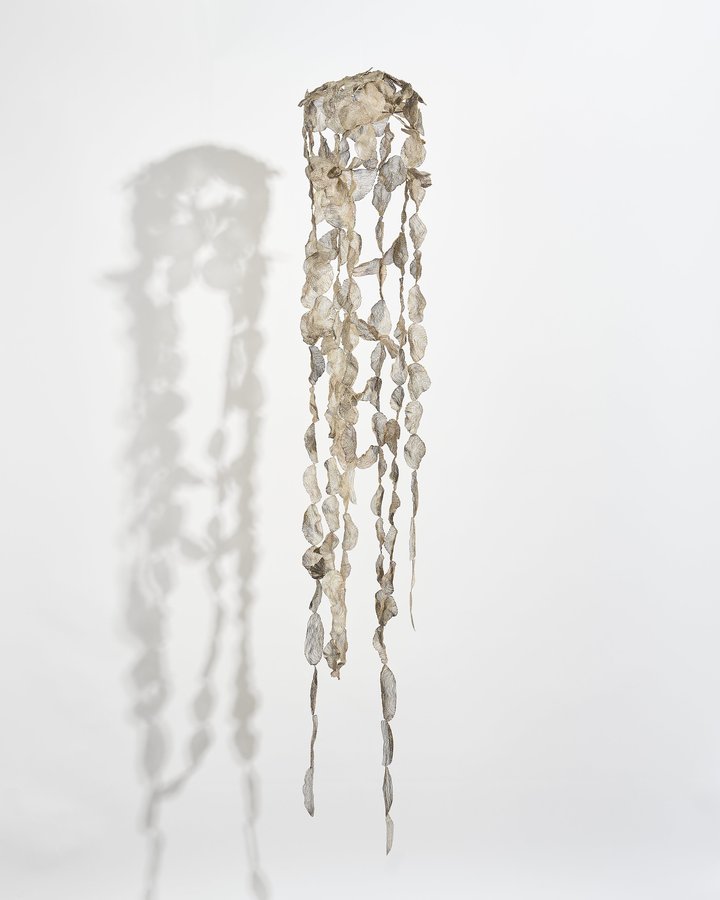
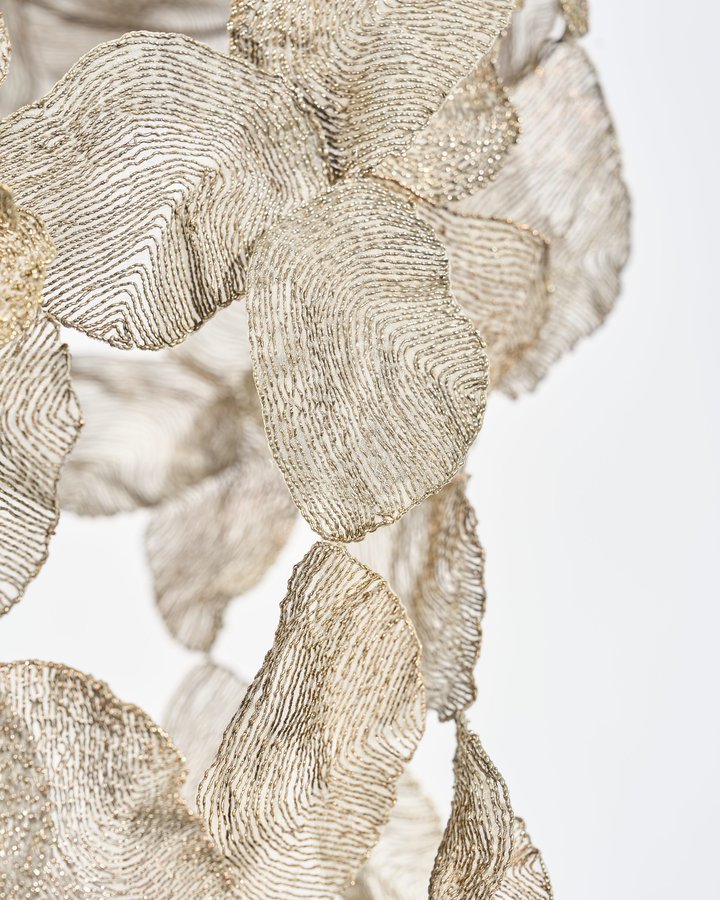
What role does the making process play in the outcome of an artwork? Do you continue to find new discoveries within familiar materials?
Some of my works develop in a highly instinctive and responsive way to the substances I make, where the development of the form is entirely driven by the material. In creating these works I will have a sense of the quality of presence I would like the piece to have, that sits there as an intention, but this is in large part already coming through in the affective nature of the substance itself, which is something I have cultivated earlier.
When I work in this way I am foregrounding the character and agency of the material, and the process that brought it to bear, so the flow of their forces continues through to the finished piece. I love these experiences of seeing the form emerge, as any sense of design I have in the beginning, is always usurped by something far more interesting, that comes through as I work responsively.
"In these pieces I meet the work in the final moments, it is only then that I know what it is."
